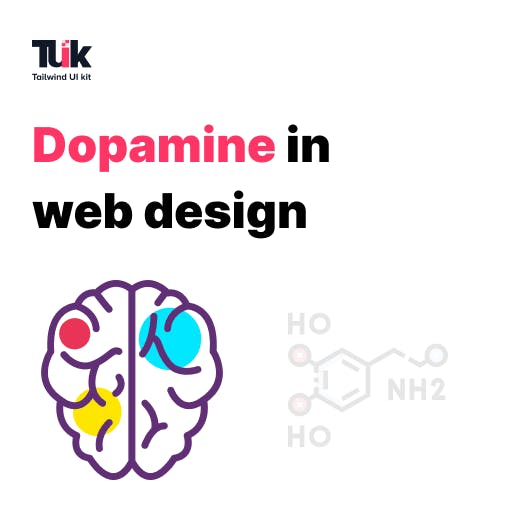Others
22 September 2021
Dopamine in Web Design

We’ve been publishing quite a few blogs on emerging design trends and concepts to keep you up-to-date with the industry. This weekly blog dives into an exciting idea of Dopamine and its connection with web design.
With a more accessible web each passing day, designers are tasked with not only capturing the attention of their users but also influencing the behavior of their visitors. Their primary objectives also include building a structure towards an overall goal that varies from selling products or getting visitors to sign-up for something. It has been proven by research that from the first nanoseconds of visiting a website, your brain and biases start to make judgment calls about the website and design.
The Behaviour and Information Technology journal has also reported that people make a like or no-like decision about a design of a website in the first 50 milliseconds. Hence, it becomes imperative for designers to tap into the viewer’s psychology right from the get-go to influence their visitors’ behavior.
Dopamine

Dopamine is known to play a key role in the motivated pursuit of rewards, happiness, and pleasure in human beings. It’s a neurotransmitter or a chemical produced in the brain. Dopamine usually kicks in when we discover something exciting or interesting. It is greatly linked to the reward and motivation of our brain. Its also released in anticipation of something that we think will be enjoyable like a kiss or a glass of wine. It becomes a reflex of the mind to release the stream of dopamine whenever you set your mind to do the same thing.
Dopamine can be instrumental in designing interfaces that take motivation and reward into account.
Dopamine and Web Design
Dopamine in web design can be building a structure of design and interface that involves creative activities that are enjoyable, leading to a state of hyper-focus called flow. Flow allows people to cut out the distractions and truly be productive with their tasks, as well as enjoying the process with their complete attention. Designers can facilitate dopamine production in designs that are detail-oriented and incorporate rewards (micro and real) for being engaging with the design. A detail-oriented interface and design can give you the edge that keeps your users engaged by using the release of dopamine to influence user behavior of revisiting the website.
Techniques for using Dopamine in web designs
Rewards can serve as a great motivator that infuses dopamine in the user behavior to repeat processes (clicks or engagement) or actually sit through a process that is otherwise mundane. Progress bars also keep the user motivated to complete the signup, payment details or even a blog to achieve the end result. Tangible rewards for signing up for your mailing list or even a sign-up can help to elicit dopamine production and influence users to associate positive feelings of likeness for your website.
For positive first impressions, your design can incorporate striking graphics and details that allow the user to get a minor dopamine release of finding something exciting and different.
Conclusion
The conclusion lies in the answer to a simple question. Why would people want to visit your website and complete the goal (signing up, sales, or subscribing to your newsletter) that you’ve set for them. The job of a designer does not end at creating a landing page that minimizes the bounce rate. It also involves building activities that elicit dopamine through capitalizing on fulfillment of their motivation. The key is to incorporate the element of discovery and detail orientation that elicits dopamine production in order to build on the motivation of the user to enjoy the process and stick around till the end.

